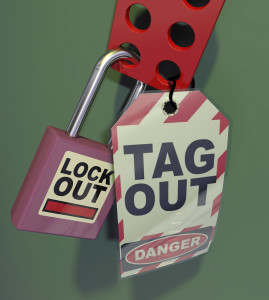My Employer Ignored Safety Regulations and Now I Am Unable to Work and Care For My Family, What Can I Do?

In December of 2011, 28-year-old Daniel Collazo died after he became caught in rotating screws that blend the hummus at the plant he worked for. His arms and part of his head were crushed as the blades kept turning and he passed on the way to the hospital in the back of an ambulance. If the plant had practiced a safety standard known as “lock out/tag out” to cut power to industrial machinery before cleaning them, the accident would have never happened.
A spokesman for the Occupational Safety and Health Administration (OSHA) was quoted as saying, “It should not take an OSHA inspection and large penalties…and the loss of a worker’s life, to compel an employer to adhere to workplace safety and health standards (Woolhouse).” What would you do in a situation where you were injured at work due to ignored safety regulations and aren’t able to work any longer?
The OSHA takes action to prevent workers from being killed or seriously harmed at work through the Occupational Safety and Health Act of 1970. It is required by law that all employers provide employees with working conditions that are free of dangers. The law also states that workers are able to file a complaint against a workplace and employer if they believe that the employer is not following OSHA standards.
OSHA provides all workers with a right to ask OSHA to inspect a workplace, use rights without retaliation or discrimination, receive information and training about hazards, and get copies of test results done to find hazards in said workplace. All workplace conditions are to be made to conform to applicable OSHA standards.
More prevention methods are being instilled along the way. For instance, OSHA citations should always be posted at or near the work area involved with taking caution and due care. These citations must remain posted until the violation is corrected or for three working days otherwise.
OSHA also encourages all employers to adopt a program known as the Injury and Illness Prevention Program. These prevention programs are put in place to reduce the number and severity of workplace injuries and to decrease financial burdens on U.S. workplaces (OSHA).
What To Do About Safety Hazards
Do you feel like you are in imminent danger in your workplace setting? Then, the first step you could take is the OSHA report direction. Otherwise, you have the right to refuse work. You are able to make a work refusal if there is reasonable and good faith belief that a condition in the workplace could case you harm like serious physical injury or even death.
You can also refuse work if the employer won’t fix the condition or if you did not have a reasonable alternative. The refusal can continue until the employer fixes the danger or investigates and makes a determination of whether or not the danger exists any longer (FindLaw).
You may choose to sue an employer for your injuries sustained in the workplace, especially if you are out of work because of it. If you don’t want to take the direction of a lawsuit, however, you can always file for workers’ compensation. Workers’ compensation is designed to protect employees who are injured or become ill as a result of their job.
Through this benefits program, you will no longer be able to file a lawsuit, but you will receive the compensation you deserve for things like medical costs and lost wages (Raasch).
You will always have a right to file for workers’ compensation if you have become injured, especially due to unsafe conditions. You also have the right to see a doctor and pursue medical treatment as well as receive some type of disability compensation if you are injured permanently and will not be able to return to work (Landers).
If you or someone you loved has been seriously injury at the workplace, contact RAWA Law Group to learn how we can help you.
Works Cited
- Megan Woolhouse. Business, 2014. Web. Accessed Nov 5, 2015.
https://www.bostonglobe.com/business/2014/05/21/worker-death-hummus-maker-willfully-ignored-safety-stands-osha-says/OxFU0kIuBY9R0dBuyF8t0I/story.html - OSHA. Occupational Safety & Health Administration, 2015. Web. Accessed Nov 5, 2015.
https://www.osha.gov/workers/index.html
https://www.osha.gov/as/opa/worker/employer-responsibility.html - FindLaw. Thomson Reuters, 2015. Web. Accessed Nov 5, 2015.
https://employment.findlaw.com/workplace-safety/protecting-yourself-from-unsafe-working-conditions.html - Janet Raasch. Lawyers.com, 2013. Web. Accessed Nov 5, 2015.
https://blogs.lawyers.com/2013/06/suing-your-employer-for-workplace-injury/ - David Landers. Nolo, 2015. Web. Accessed Nov 5, 2015.
https://www.nolo.com/legal-encyclopedia/i-was-injured-work-what-my-legal-rights.html
